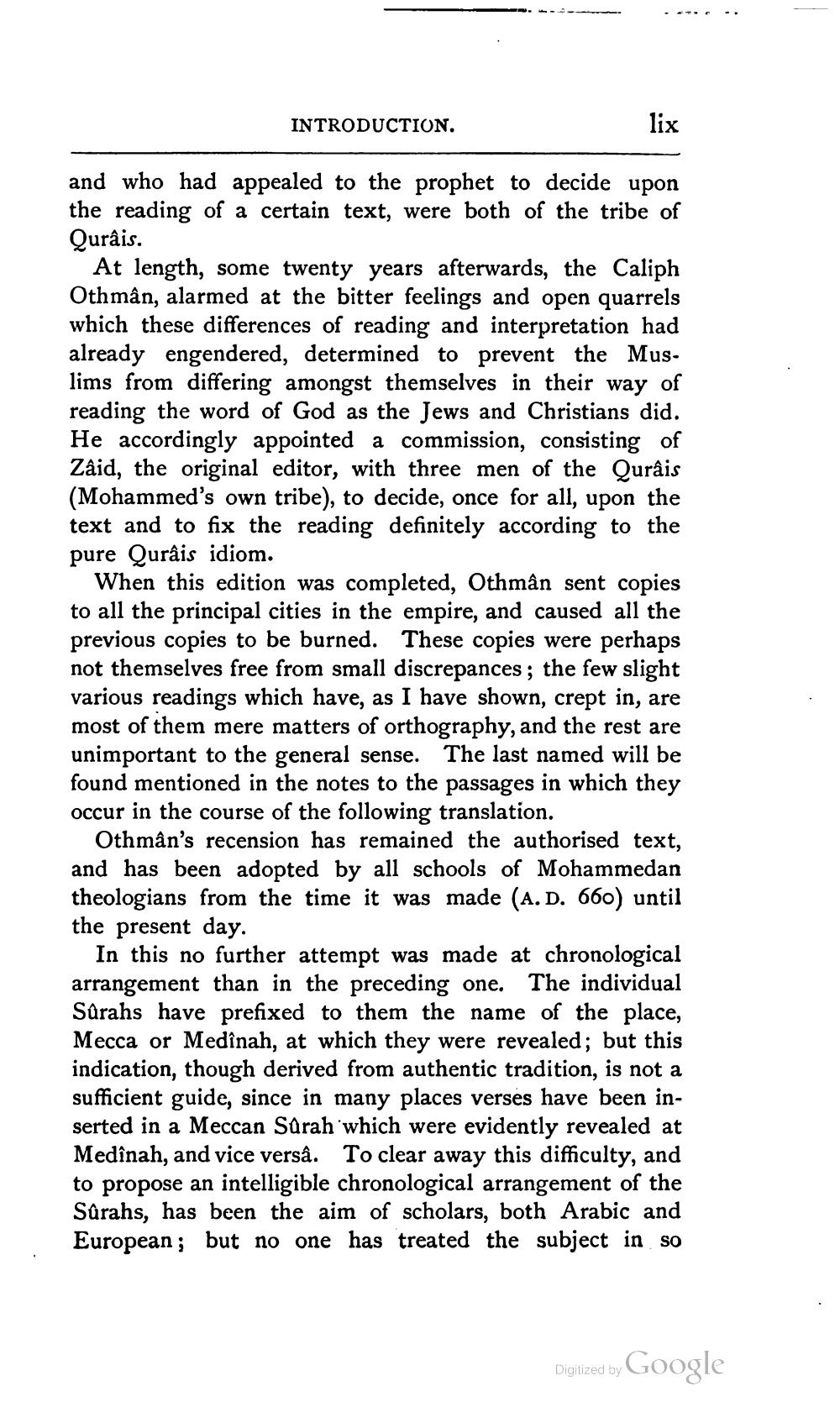________________
INTRODUCTION.
lix
and who had appealed to the prophet to decide upon the reading of a certain text, were both of the tribe of Qurâis.
At length, some twenty years afterwards, the Caliph Othmân, alarmed at the bitter feelings and open quarrels which these differences of reading and interpretation had already engendered, determined to prevent the Muslims from differing amongst themselves in their way of reading the word of God as the Jews and Christians did. He accordingly appointed a commission, consisting of Zâid, the original editor, with three men of the Qurais (Mohammed's own tribe), to decide, once for all, upon the text and to fix the reading definitely according to the pure Qurâis idiom.
When this edition was completed, Othmân sent copies to all the principal cities in the empire, and caused all the previous copies to be burned. These copies were perhaps not themselves free from small discrepances; the few slight various readings which have, as I have shown, crept in, are most of them mere matters of orthography, and the rest are unimportant to the general sense. The last named will be found mentioned in the notes to the passages in which they occur in the course of the following translation.
Othmân's recension has remained the authorised text, and has been adopted by all schools of Mohammedan theologians from the time it was made (A.D. 660) until the present day.
In this no further attempt was made at chronological arrangement than in the preceding one. The individual Sûrahs have prefixed to them the name of the place, Mecca or Medînah, at which they were revealed; but this indication, though derived from authentic tradition, is not a sufficient guide, since in many places verses have been inserted in a Meccan Sûrah which were evidently revealed at Medînah, and vice versâ. To clear away this difficulty, and to propose an intelligible chronological arrangement of the Sûrahs, has been the aim of scholars, both Arabic and European; but no one has treated the subject in so
Digitized by
Google




